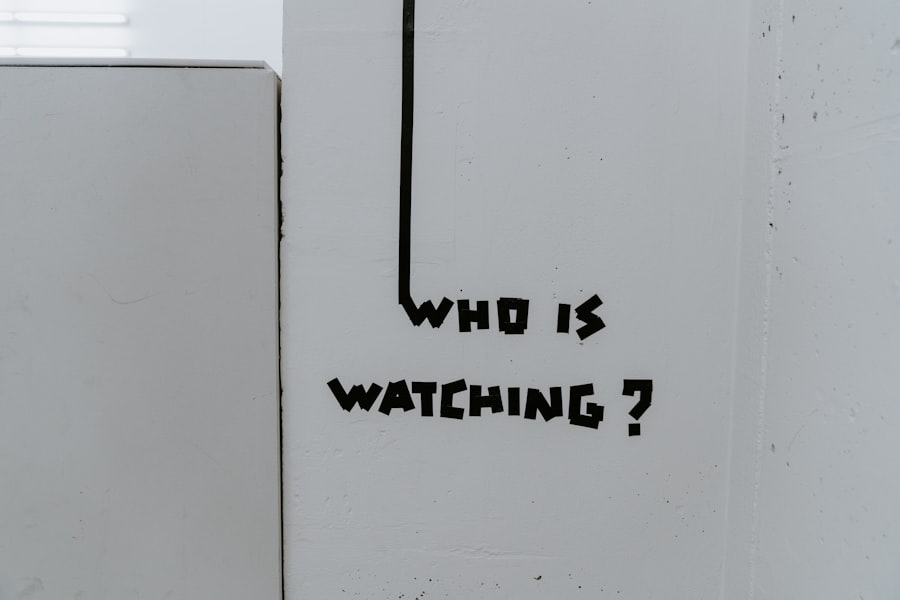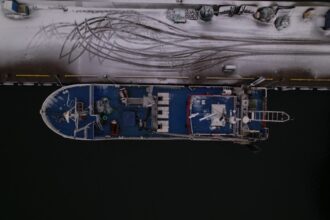The John Walker Spy Ring, a notorious espionage network that operated during the Cold War, emerged in the late 1960s and early 1970s. At its core was John Anthony Walker Jr., a former U.S. Navy officer who became disillusioned with his country and sought to provide sensitive military information to the Soviet Union.
Walker’s motivations were complex, rooted in a combination of ideological beliefs and personal grievances. He began his espionage activities while still serving in the Navy, leveraging his access to classified materials to establish a network that would ultimately compromise U.S. national security.
As Walker recruited members to his ring, he capitalized on their vulnerabilities and shared discontent with the government. The formation of the spy ring was not an isolated incident but rather a reflection of the broader tensions of the era, where distrust in government institutions was prevalent. Walker’s ability to connect with individuals who shared his sentiments allowed him to expand his operations, creating a web of espionage that would span over a decade.
The initial stages of the spy ring were marked by secrecy and careful planning, as Walker sought to avoid detection while he gathered intelligence for the Soviets.
Key Takeaways
- The John Walker Spy Ring was formed by John Walker, a former US Navy officer, and his family members in the 1960s.
- The espionage activities of the John Walker Spy Ring involved stealing and selling classified military information to the Soviet Union.
- The members of the John Walker Spy Ring included John Walker, his brother, son, and friend, who all played key roles in the espionage activities.
- The impact of the John Walker Spy Ring on national security was significant, as it compromised sensitive military information and jeopardized US defense capabilities.
- The arrest and prosecution of the John Walker Spy Ring members led to their convictions and exposed the extent of their espionage activities.
The Espionage Activities of the John Walker Spy Ring
The espionage activities conducted by the John Walker Spy Ring were extensive and deeply damaging to U.S. intelligence operations. The ring primarily focused on obtaining classified naval documents, including codes and communication protocols that were vital for U.S.
military operations. Walker’s position within the Navy provided him with direct access to sensitive information, which he meticulously copied and transmitted to Soviet handlers. This information was not only valuable in terms of military strategy but also provided insights into U.S.
naval capabilities and weaknesses. The scope of the spy ring’s activities extended beyond mere document theft; it involved a systematic approach to espionage that included surveillance, recruitment, and the establishment of secure communication channels with Soviet agents. Walker’s ability to maintain a low profile while executing these operations was crucial to their success.
The ring’s activities went undetected for years, allowing them to gather an extensive trove of intelligence that would later be used against U.S. interests during the Cold War. The ramifications of their actions would reverberate throughout the intelligence community, leading to significant changes in how classified information was protected.
The Members of the John Walker Spy Ring

The John Walker Spy Ring was not solely the product of one man’s ambition; it was a collective effort involving several key individuals who played pivotal roles in its operations. Alongside John Walker were his son, John Walker Jr., and two other associates, Jerry Whitworth and Michael Walker. Each member brought unique skills and perspectives that contributed to the ring’s effectiveness.
John Walker Jr., for instance, was instrumental in helping his father navigate the complexities of espionage while also providing additional access to classified materials through his own military service. Jerry Whitworth, a close friend of Walker’s, was another critical figure in the spy ring. His background as a communications technician allowed him to understand the intricacies of naval communications systems, making him an invaluable asset in deciphering and relaying sensitive information.
Michael Walker, John’s son, also played a role in facilitating communication between members and ensuring that information was transmitted securely. Together, these individuals formed a tight-knit group that operated under a veil of secrecy, driven by a shared commitment to their cause.
The Impact of the John Walker Spy Ring on National Security
| Impact of John Walker Spy Ring on National Security | |
|---|---|
| Number of classified documents compromised | Over 1 million |
| Duration of espionage activities | 17 years |
| Number of naval secrets leaked | Extensive submarine warfare tactics |
| Damage to national security | Significant and long-lasting |
| Impact on US-Soviet relations | Increased tensions and mistrust |
The impact of the John Walker Spy Ring on national security was profound and far-reaching. The intelligence they provided to the Soviet Union compromised numerous U.S. military operations and strategies during a critical period of the Cold War.
The loss of sensitive naval codes and communication protocols not only jeopardized military missions but also eroded trust within the intelligence community regarding the security of classified information. The revelations about the spy ring’s activities prompted a reevaluation of security measures across various branches of the military. In addition to immediate operational concerns, the long-term implications for national security were equally significant.
The breach highlighted vulnerabilities within U.S.
As a result, agencies began implementing new protocols aimed at safeguarding sensitive information from internal threats.
The fallout from the spy ring’s activities served as a wake-up call for national security officials, leading to increased scrutiny of personnel with access to classified materials and a renewed focus on counterespionage efforts.
The Arrest and Prosecution of the John Walker Spy Ring
The unraveling of the John Walker Spy Ring began in 1985 when law enforcement agencies started piecing together evidence that pointed to espionage activities within the Navy. The investigation gained momentum after John Walker’s ex-wife provided crucial information about his suspicious behavior and connections to Soviet agents. This led to increased surveillance and ultimately culminated in the arrest of Walker and several members of his spy ring in 1985.
The dramatic nature of their capture underscored the gravity of their actions and the threat they posed to national security. Following their arrest, the prosecution of the members of the spy ring became a high-profile case that captured national attention. John Walker faced multiple charges related to espionage, conspiracy, and theft of government property.
His son and associates were also charged, leading to a series of trials that revealed the extent of their activities and motivations. Ultimately, John Walker was sentenced to life in prison without parole, while other members received varying sentences based on their level of involvement. The legal proceedings highlighted not only the betrayal felt by the nation but also served as a cautionary tale about the dangers posed by insider threats.
The Motivations of John Walker and the Other Members of the Spy Ring

Understanding the motivations behind John Walker and his associates’ actions requires delving into their personal beliefs and circumstances.
He viewed himself as a patriot who believed he was serving a greater cause by providing information to what he perceived as a more just system in the Soviet Union.
This ideological conviction was compounded by personal grievances stemming from his experiences in the Navy, where he felt undervalued and overlooked. The motivations of other members varied but often mirrored Walker’s sentiments. Many were drawn into the spy ring due to financial incentives or personal connections rather than ideological beliefs alone.
For instance, Jerry Whitworth was reportedly motivated by financial gain, seeking monetary rewards for his contributions to espionage activities. Meanwhile, Michael Walker’s involvement can be attributed to familial loyalty and a desire to support his father’s endeavors. This complex interplay of motivations created a dynamic environment within the spy ring that ultimately led them down a path of betrayal against their country.
The Methods and Techniques Used by the John Walker Spy Ring
The methods employed by the John Walker Spy Ring were characterized by careful planning and execution, reflecting a sophisticated understanding of espionage tactics. One of their primary techniques involved leveraging access to classified materials through legitimate military channels. By working within the Navy, they could obtain sensitive documents without raising immediate suspicion.
This approach allowed them to gather critical intelligence over an extended period while maintaining a façade of normalcy. In addition to document theft, the spy ring utilized secure communication methods to relay information to their Soviet contacts. They employed coded messages and clandestine meetings to ensure that their communications remained undetected by U.S.
intelligence agencies. This level of operational security demonstrated their awareness of counterintelligence measures and their commitment to avoiding detection for as long as possible. Their ability to adapt and refine their techniques over time contributed significantly to their success in evading capture for years.
The Legacy of the John Walker Spy Ring in the Intelligence Community
The legacy of the John Walker Spy Ring continues to resonate within the intelligence community today, serving as both a cautionary tale and a catalyst for change in security protocols. The extensive damage caused by their espionage activities prompted agencies to reevaluate their approaches to counterintelligence and personnel security measures. In particular, there was an increased emphasis on monitoring individuals with access to classified information, leading to more rigorous background checks and ongoing assessments of personnel reliability.
Moreover, the case highlighted the importance of fostering a culture of vigilance within organizations tasked with safeguarding national security. Lessons learned from the spy ring’s activities have informed training programs aimed at educating personnel about potential insider threats and encouraging reporting mechanisms for suspicious behavior. As such, while the actions of John Walker and his associates represented a significant breach of trust, they also spurred necessary reforms that have strengthened national security efforts in subsequent decades.
The Aftermath of the John Walker Spy Ring’s Activities
In the aftermath of the John Walker Spy Ring’s activities, there was an urgent need for reflection and reform within U.S. intelligence agencies. The revelations surrounding their espionage highlighted systemic vulnerabilities that had allowed such breaches to occur undetected for years.
As investigations unfolded, it became clear that there were gaps in communication between various intelligence entities that needed addressing to prevent future incidents. The fallout from this case also led to increased public scrutiny regarding how classified information was handled within government agencies. Citizens became more aware of potential threats posed by insider espionage, prompting calls for greater transparency and accountability among those entrusted with national security responsibilities.
In response, agencies began implementing new policies aimed at enhancing oversight and ensuring that personnel with access to sensitive information were subject to more stringent evaluations.
The Counterintelligence Efforts to Thwart the John Walker Spy Ring
In light of the extensive damage caused by the John Walker Spy Ring, counterintelligence efforts were significantly bolstered following their arrest. Intelligence agencies recognized that proactive measures were essential in identifying potential insider threats before they could inflict harm on national security interests. This led to an increased focus on developing robust counterintelligence programs designed to detect unusual behavior among personnel with access to classified materials.
These efforts included enhanced training for employees on recognizing signs of espionage and establishing clear reporting channels for suspicious activities. Additionally, agencies began employing advanced technology for monitoring communications and analyzing patterns that could indicate potential breaches. By adopting a more comprehensive approach to counterintelligence, U.S.
agencies aimed not only to prevent future incidents similar to those perpetrated by Walker’s ring but also to foster an environment where employees felt empowered to report concerns without fear of reprisal.
The Lessons Learned from the John Walker Spy Ring for Future Security Measures
The saga of the John Walker Spy Ring offers invaluable lessons for future security measures within intelligence communities worldwide. One key takeaway is the importance of fostering an organizational culture that prioritizes vigilance against insider threats while simultaneously supporting personnel well-being and morale. Agencies must strike a balance between maintaining security protocols and ensuring that employees feel valued and engaged in their work.
Another critical lesson is the necessity for continuous evaluation and adaptation of security measures in response to evolving threats. As technology advances and espionage tactics become more sophisticated, intelligence agencies must remain agile in their approaches to safeguarding sensitive information. This includes investing in training programs that equip personnel with knowledge about emerging threats while also encouraging collaboration between different branches of intelligence organizations.
In conclusion, while the actions of John Walker and his associates represented a significant betrayal against their country, they also served as catalysts for necessary reforms within U.S. intelligence agencies. By learning from past mistakes and implementing proactive measures aimed at preventing future breaches, national security can be strengthened against potential insider threats in an increasingly complex global landscape.
The John Walker spy ring, a notorious espionage case during the Cold War, involved a group of U.S. Navy personnel who sold classified information to the Soviet Union. This breach of national security had significant implications for U.S. intelligence operations. For a deeper understanding of the context and impact of espionage during this era, you can explore a related article on the topic by visiting In The War Room. This resource provides insights into various espionage activities and their effects on global politics, offering a broader perspective on the intricate world of intelligence and counterintelligence.
WATCH THIS 🤯How the KGB Stole America’s Future
FAQs
What was the John Walker spy ring?
The John Walker spy ring was a group of individuals, led by John Walker, who were involved in one of the most damaging espionage operations in United States history.
Who was John Walker?
John Walker was a former United States Navy officer who led the spy ring. He recruited his son, Michael Walker, as well as Jerry Whitworth and others to steal and sell classified information to the Soviet Union during the Cold War.
What kind of information did the spy ring steal and sell?
The spy ring stole and sold a wide range of classified information, including cryptographic keys and codes used by the U.S. Navy to communicate securely. This compromised the security of U.S. military operations and put American lives at risk.
How were the members of the spy ring caught?
The spy ring was eventually uncovered in 1985 when John Walker’s ex-wife, Barbara Walker, reported his espionage activities to the FBI. This led to the arrest and conviction of John Walker, his son, and Jerry Whitworth.
What were the consequences of the John Walker spy ring?
The consequences of the spy ring’s activities were severe, as it compromised U.S. national security and put American lives at risk. The information stolen by the spy ring had significant implications for U.S. military operations and intelligence activities.




